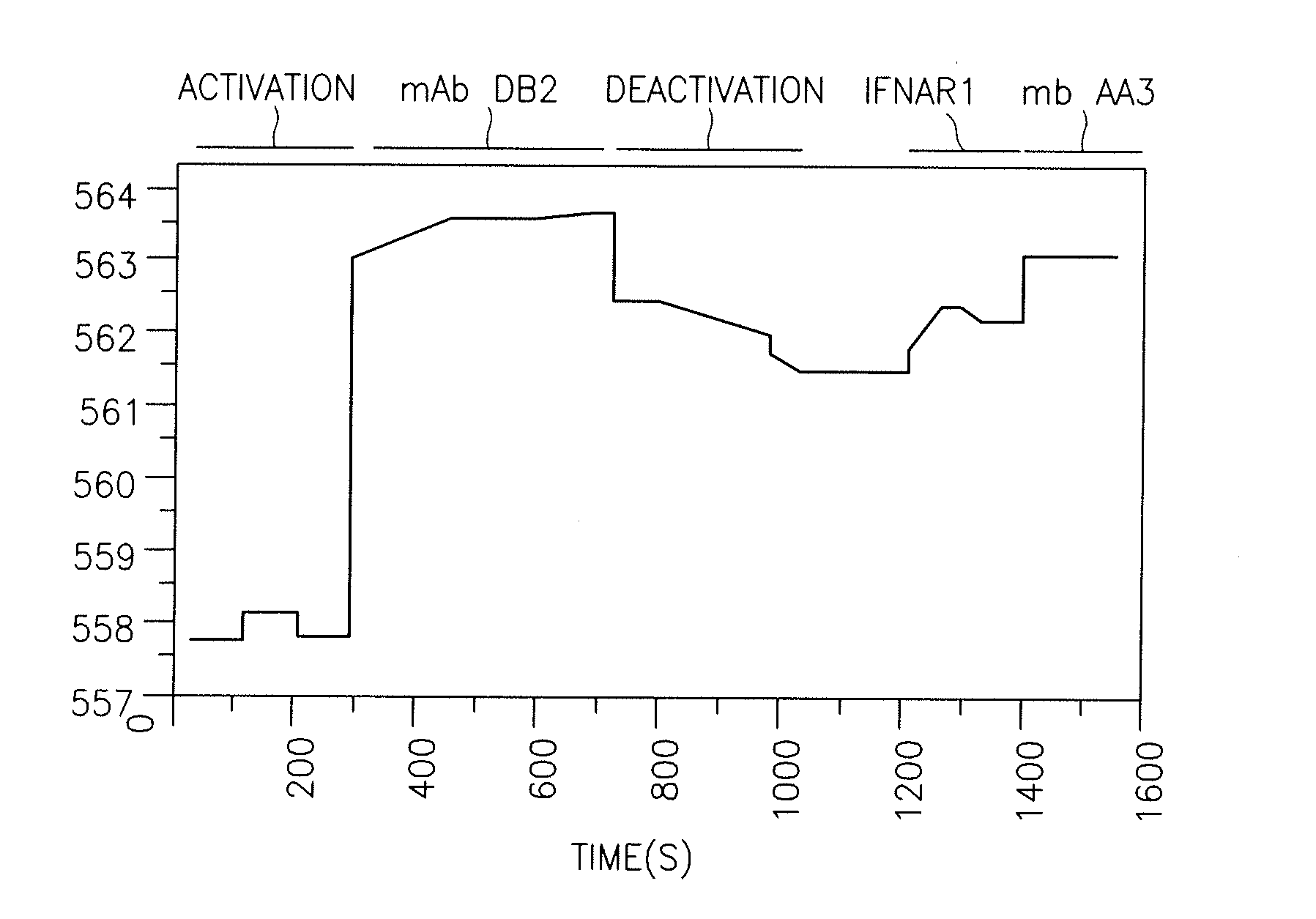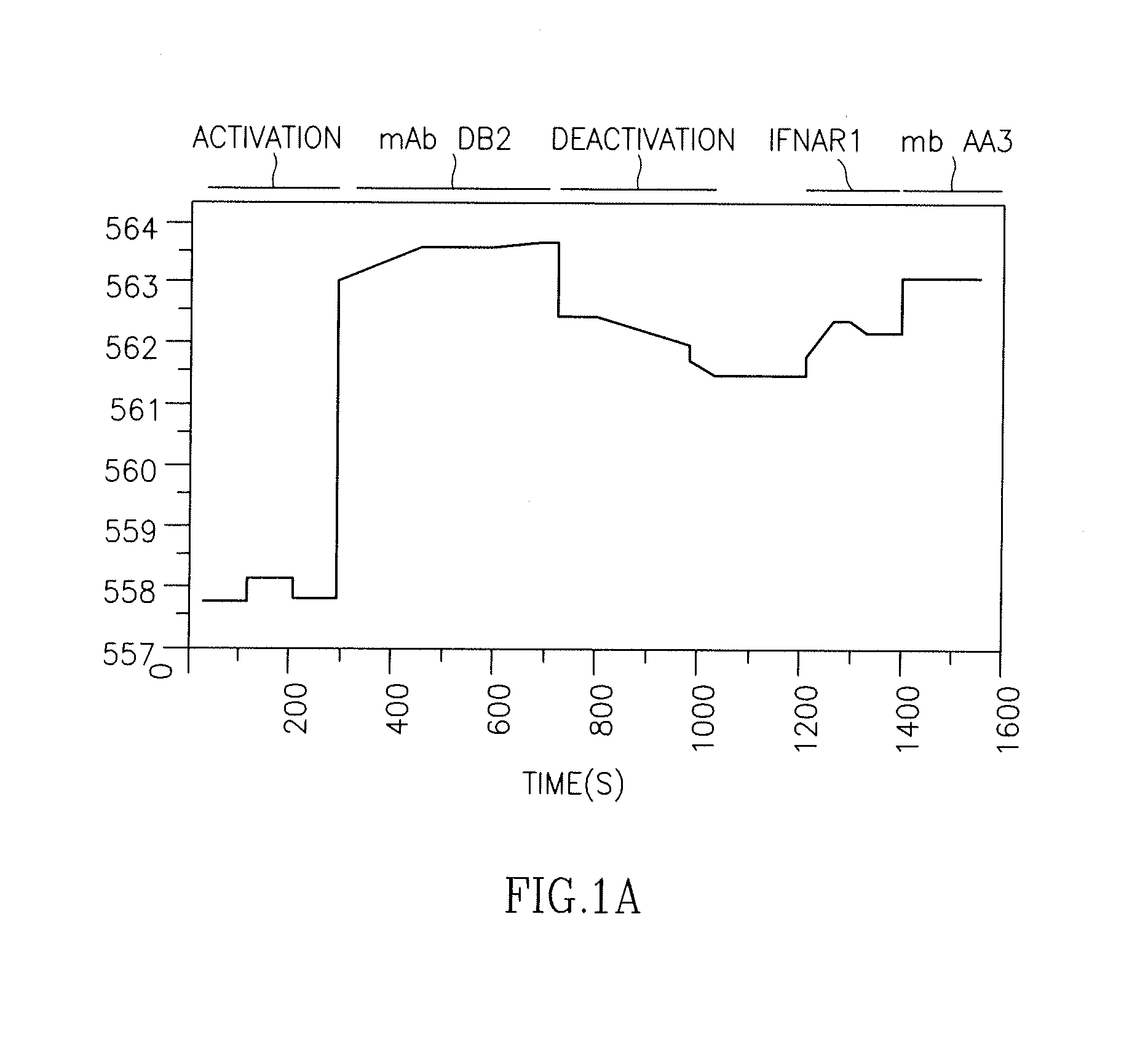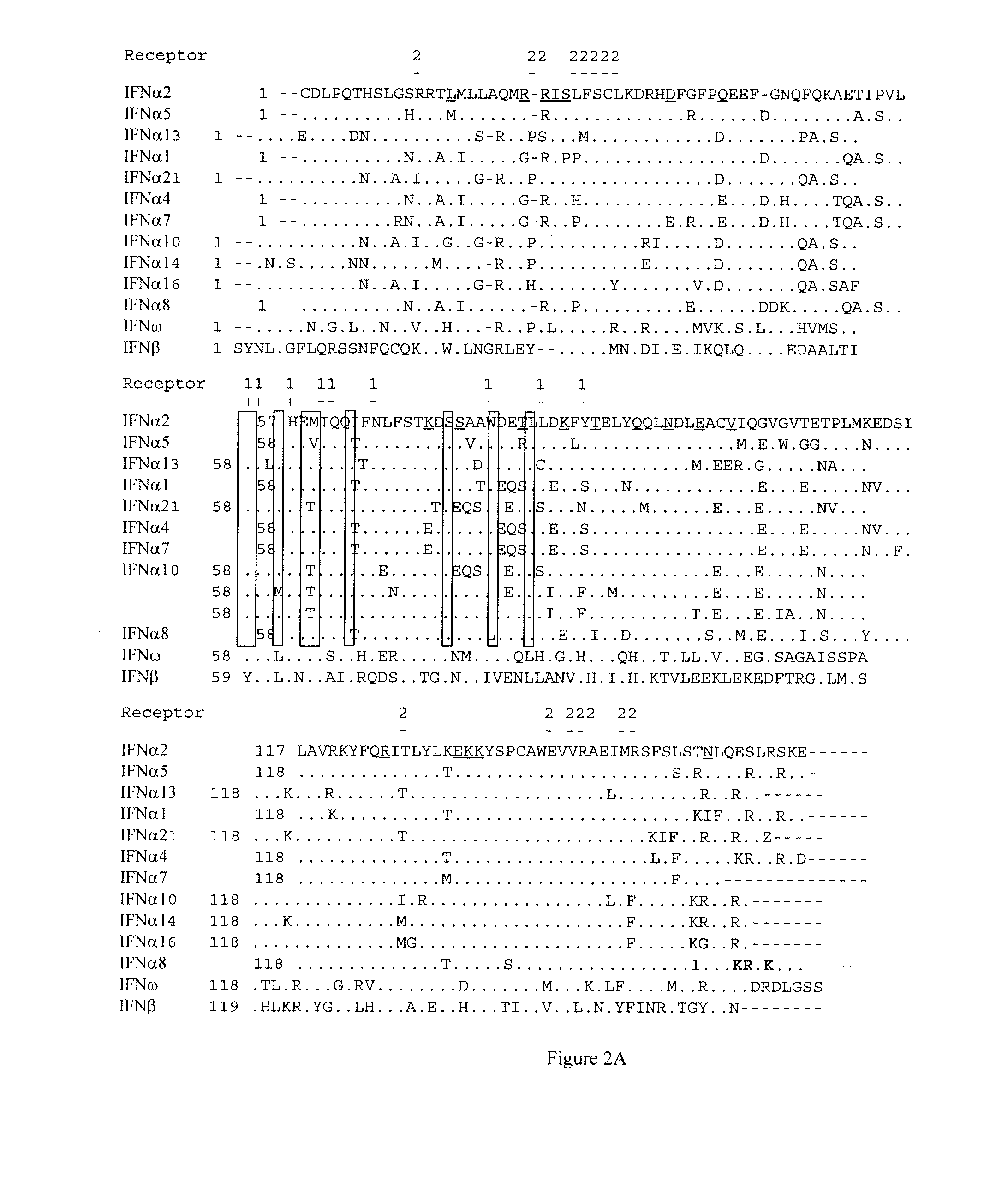Recombinant interferon alpha2 (ifnalpha2) mutants and methods of use thereof
a technology of recombinant interferon and alpha2, which is applied in the field of ifn2 mutants, can solve the problems of ineffective treatment alternatives and intolerant side effects of patients, and achieve the effects of increasing the affinity of mutated ifn2 polypeptides, enhancing ifnar binding, ifnar signaling and biological activity, and enhancing ifnar binding and signaling
- Summary
- Abstract
- Description
- Claims
- Application Information
AI Technical Summary
Benefits of technology
Problems solved by technology
Method used
Image
Examples
examples 1-2
[0155]Site-directed mutagenesis. Site-directed mutagenesis was carried out by PCR amplification of the expression plasmid pT72 Cα2, which encoded the IFNα2 protein (SEQ ID NO: 2) with 18-21 nucleotide primers containing the mutated codon using high fidelity polymerases pwo (Boehringer Mannheim) and pfu (Stratagene) as described (Piehler, J. & Schreiber, G. 1999, J. Mol. Biol. 294, 223-237). After phosphorylation and ligation, mutated plasmids were transformed into E. coli TG1 cells. Sequences of whole expressed genes containing mutations were verified by DNA sequencing.
[0156]Protein expression and purification. For IFNAR2-EC production, E. coli TG1 cells containing pT72CR2 (Piehler J, Schreiber G. Biophysical analysis of the interaction of human ifnar2 expressed in E. coli with IFNalpha2. J Mol Biol 28;289(1):57-67, 1999) were grown at 37° C. in 750 ml of 2×TY medium containing 100 mg / ml ampicillin in two liter flasks. At A600=0.6, protein expression was induced by addition of 0.2 m...
example 1
Characterization of the IFNα2-IFNAR1-EC Interaction Using an Optical Biosensor System
[0163]Interaction of the type I interferon receptor-extracellular domain (IFNAR1-EC) with wild-type (wt) IFNα2 was characterized in real time by label-free solid-phase detection with RIfS (FIG. 1A) as well as by a Surface Plasmon Resonance based ProteON x36. Binding activity of IFNAR1-EC bound to the RIfS or ProteON surface was determined by injecting IFNα2 protein at concentrations ranging from 0.12 to 4 μM and plotting steady-state response vs. protein concentration according to the law of mass action. Wild type IFNα2 exhibits an affinity constant of 1.5 μM (Lamken, P. et al., 2004, J Mol Biol 341: 303-318).
example 2
Identification of IFNα2 Residues Important for IFNAR1 Binding
[0164]To locate residues important for binding of IFNAR1 to IFNα2, Ala scan of residues located on the B and C helices was performed (FIG. 2). 21 single point mutations were produced, and their binding affinities towards IFNAR2 and IFNAR1 were measured. Three single mutations, H57A, E58A, and Q61A, increased IFNAR1 binding; and six mutations, F64A, N65A, T69A, L80A, Y85A, Y89A, decreased IFNAR1 binding (Table 1B [shown after Example 3] and FIG. 2B). Triple- and quadruple mutants containing the single-mutations L80A, Y85A, Y89A (“LYY”; SEQ ID NO: 45) and N65A, L80A, Y85A, Y89A (SEQ ID NO: 6; “NLYY”) were prepared; binding for these proteins was below the threshold of the measurement. Affinities of mutants for IFNAR2 were very similar to wild-type IFNα2, as expected for mutations located on the opposite surface of the IFNAR2 binding site on IFNα2 (Table 1A), thus validating proper folding of all mutant proteins and their act...
PUM
| Property | Measurement | Unit |
|---|---|---|
| pH | aaaaa | aaaaa |
| pH | aaaaa | aaaaa |
| net charge | aaaaa | aaaaa |
Abstract
Description
Claims
Application Information
 Login to View More
Login to View More - R&D
- Intellectual Property
- Life Sciences
- Materials
- Tech Scout
- Unparalleled Data Quality
- Higher Quality Content
- 60% Fewer Hallucinations
Browse by: Latest US Patents, China's latest patents, Technical Efficacy Thesaurus, Application Domain, Technology Topic, Popular Technical Reports.
© 2025 PatSnap. All rights reserved.Legal|Privacy policy|Modern Slavery Act Transparency Statement|Sitemap|About US| Contact US: help@patsnap.com



